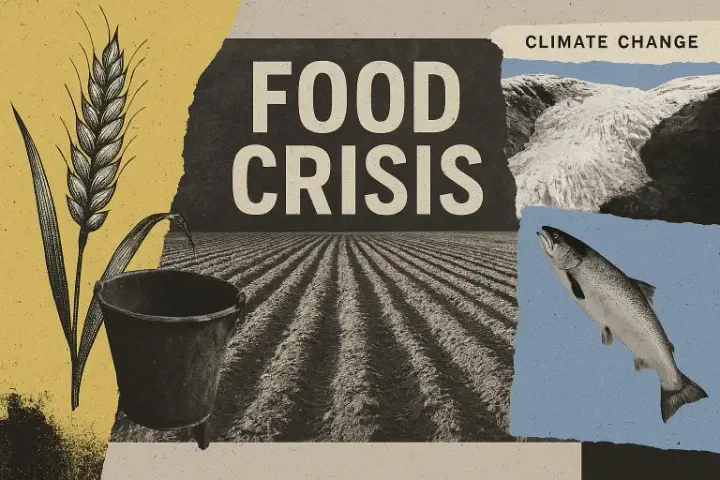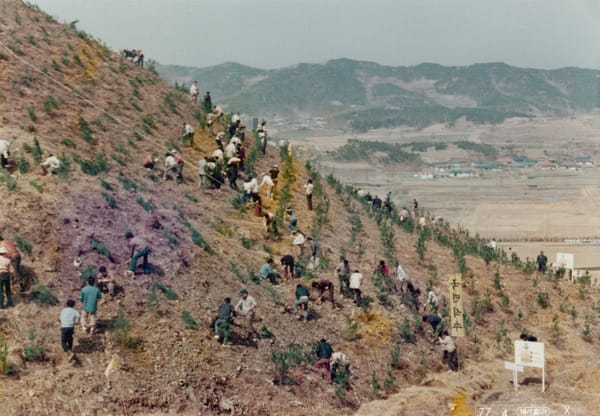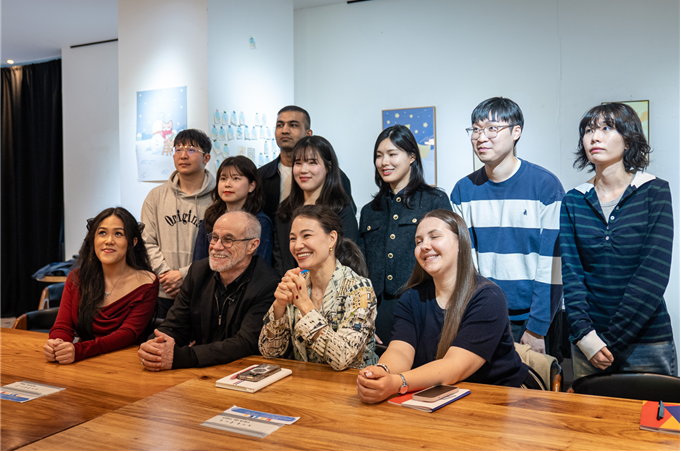How the Vegan Trend Masks a New Kind of Food Inequality
Trendy vegan cafés are thriving in Korean cities, but they may be eclipsing more practical, affordable, and ecologically grounded food traditions. What’s lost when clean eating becomes a brand — and who gets left behind?

Veganism is gaining ground in Korea, but its rise is marked less by local heritage and more by imported ingredients, aesthetic branding, and rising costs — raising new questions about who gets to eat “ethically,” and at what price.
Across major Korean cities, plant-based cafés and vegan bakeries are drawing steady crowds. Their menus feature dairy-free lattes, meatless sandwiches, and pastries made with imported fruit and alternative milks. Promoted as healthy and environmentally friendly, these offerings are often accompanied by language that emphasizes sustainability, ethics, and “clean eating.”
But beneath the surface of this trend lies a growing disconnect. Many of the ingredients used in these establishments — almonds, avocados, coconut milk, cashew cream — are imported, resource-intensive, and expensive. A single vegan meal can cost significantly more than its non-vegan equivalent, raising questions about who this food is actually for, and what it truly sustains.
In Korea, where traditional diets already include a wide range of plant-based dishes rooted in local agriculture and fermentation, the rise of stylized veganism also reflects a cultural shift. Instead of building on existing food heritage — such as temple cuisine or seasonal vegetable-based meals — the trend leans heavily on Western health food models and globalized supply chains.
As the demand for plant-based eating grows, so does the need to examine its contradictions: the environmental impact of its ingredients, the socioeconomic barriers to access, and the nutritional assumptions behind its health claims. The popularity of veganism signals important awareness — but it also risks overshadowing more grounded, affordable, and regionally appropriate paths to sustainable food.
When Veganism Becomes a Lifestyle Brand
In Korean cities, veganism is shifting from ethical practice to curated lifestyle. With high prices, imported menus, and Westernized aesthetics, plant-based eating is becoming less a movement and more a consumer trend — one that excludes the very values it claims to promote.
What began as a philosophy rooted in ethics — rejecting animal exploitation and promoting ecological sustainability — has in many cases been transformed into a branded experience. In Korea, veganism is increasingly consumed as a lifestyle: visually curated, often expensive, and marketed more for its image than its substance.
Cafés and bakeries labeled “plant-based” or “clean” typically offer visually striking menus: non-dairy lattes in ceramic mugs, sandwiches with imported avocado and hummus, desserts made with cashew cream or coconut milk. Interiors follow a minimalist aesthetic, and prices reflect the branding — a vegan sandwich or tart can cost twice as much as its conventional counterpart. While these businesses often avoid the term “vegan” to sidestep associations with activism or restriction, their messaging still signals moral clarity: this food is better — for you, and for the planet.
But the model comes with limitations. Many of these businesses operate within narrow market conditions: small urban catchment areas, limited purchasing power, and a customer base motivated more by trend than ideology. As a result, several high-profile vegan cafés and restaurants in Seoul, Busan, and Jeju have opened with buzz — and quietly closed a year or two later.
Their closures don’t necessarily reflect a lack of interest in ethical eating. Instead, they point to the fragility of a food culture built around exclusivity. When ethical consumption is priced as luxury, it becomes vulnerable to market fatigue, rising rent, ingredient inflation, and shifting social attention. What remains is not a movement, but a moment.
This version of veganism also risks sidelining Korea’s own deep-rooted plant-based traditions. Temple cuisine, fermented side dishes, wild greens, and seasonal vegetable stews — all nutritionally balanced and ecologically adapted — are often absent from these premium spaces. Instead, menus borrow heavily from global health food tropes, reproducing a Western wellness aesthetic that’s more familiar on Instagram than in a Korean kitchen.
In effect, ethical eating is reframed not as a public good but as a private choice — one available to those with the time, income, and cultural fluency to participate. The result is a stratified food landscape, where sustainability becomes a matter of branding, not systemic change.
The Environmental Cost of ‘Green’ Eating
Many plant-based foods praised for their environmental benefits come with hidden costs: carbon-intensive supply chains, ecological damage abroad, and the displacement of local, low-impact food traditions at home.
At the core of the plant-based movement is a widely accepted assumption: eating vegan is better for the planet. Lower greenhouse gas emissions, reduced water use, and less land degradation are often cited as environmental benefits of eliminating animal products. In principle, this is true — particularly when comparing industrial meat production to a diet built on whole grains and local vegetables.
But in practice, many modern vegan meals rely on global supply chains that introduce new forms of environmental strain. High-demand plant-based staples such as almonds, avocados, quinoa, coconut milk, and cashews are cultivated in ecologically vulnerable regions. Almond farming in California consumes massive quantities of water in drought-prone conditions. Avocado cultivation has been linked to deforestation and cartel activity in Mexico. Cashew processing exposes workers, often women in South Asia, to harmful chemicals and poor labor conditions.
These ingredients are routinely flown or shipped across continents to meet demand in urban vegan markets — including those in Seoul and Busan — where they’re used in upscale cafés and bakeries promoting sustainability. The carbon cost of importing these items is rarely acknowledged, even as they are served under banners of environmental consciousness.
In Korea, the irony deepens. Traditional diets, especially those rooted in temple cuisine, are built on hyperlocal, seasonal, and low-impact ingredients: wild greens, legumes, grains, fermented soybean paste, seaweed, mushrooms. These dishes were developed over centuries not through ideology, but through necessity — maximizing nutrition in a land with limited arable land and harsh seasons.
Yet these foods are largely absent from the menus of trendy plant-based eateries, where Mediterranean grain bowls and avocado toast have become the default. The ecological logic of eating from nearby land and seasonal cycles is replaced by a consumer logic of global access and visual appeal. Veganism, in this form, shifts from being a practice of restraint to a performance of abundance — a table full of superfoods with hidden supply chains.
Rather than supporting sustainable local agriculture, much of the current plant-based industry supports the illusion of sustainability — one that is visually appealing, commercially viable, and easily packaged for digital consumption, but built on extractive, often exploitative global systems.
Without considering where ingredients come from, how they are produced, and who bears the cost, plant-based eating risks becoming just another form of high-consumption globalism — rebranded in green.
The Social Divide and Nutritional Ironies
While veganism is often framed as healthy and natural, it increasingly relies on costly supplements and processed substitutes — accessible only to a narrow demographic. By contrast, Korea’s traditional plant-based diets offered balance without branding.
In much of the world — including Korea — the image of veganism has evolved from a form of personal restraint to a sign of cultural capital. Plant-based menus are increasingly associated with health-conscious elites, while the food itself is often priced beyond the reach of average consumers. In Seoul, a vegan lunch can cost anywhere from ₩15,000 to ₩20,000, far exceeding the cost of a standard Korean meal. Meatless substitutes, dairy-free milks, and nut-based spreads are often imported and heavily processed, driving up both cost and exclusivity.
This pricing structure doesn’t just reflect supply chains — it reflects a social system where ethical eating has become a lifestyle choice tied to class and geography. In working-class neighborhoods, traditional markets, or rural areas, plant-based options are limited or nonexistent. Convenience stores and school cafeterias rarely offer nutritionally complete vegan meals. For many, veganism is not a viable daily practice — it’s a curated experience available in select urban pockets.
Even when affordability isn’t the main barrier, practicality often is. A growing number of vegan cookbooks and influencers recommend exotic grains, rare spices, or slow-cooked dishes requiring appliances and spare time. These routines may suit the health-conscious middle class, but they overlook the realities of single parents, shift workers, or those without access to specialty grocery stores.
Beneath the surface, there’s a deeper contradiction: a diet celebrated as natural often depends on synthetic support. Long-term vegans are typically advised to take vitamin B12, iron, omega-3, and calcium supplements — nutrients difficult to obtain from plant sources alone. In some cases, health professionals recommend routine bloodwork to monitor deficiencies. The image of a clean, self-sufficient diet masks a quiet reliance on pharmaceuticals and industrially fortified products.
By contrast, Korea’s traditional plant-based diets — built around barley, beans, fermented soy, wild greens, and seasonal roots — offer nutritional balance without supplementation. Through fermentation, biodiversity, and culinary ingenuity, these diets met both environmental and bodily needs long before "vegan" was a marketing term.
In sidelining these accessible, time-tested food systems in favor of imported health food trends, modern veganism risks becoming not just exclusionary, but unnecessarily complicated and technologically dependent. A way of eating that was once about humility and connection is, in many cases, becoming a matter of logistics — and privilege.
Toward a Real Sustainable Diet
A sustainable future for food lies not in imported superfoods or boutique cafés, but in restoring everyday access to local, seasonal, and culturally rooted meals — the kind that nourish people and land alike.
The growing popularity of veganism has helped raise critical awareness around issues of food ethics, climate responsibility, and health. Yet as this awareness filters through the lens of consumer culture, the movement risks losing sight of the very values it set out to promote. Plant-based eating, when built on expensive imports and aesthetic branding, may be more reflective of privilege than progress. If ethical food is to mean more than a curated lifestyle, it must be grounded in the realities of ecology, labor, affordability, and cultural continuity.
In the Korean context, sustainable eating does not need to be invented. It already exists in the form of temple cuisine, seasonal home-cooked meals, and a culinary tradition shaped by scarcity, preservation, and an intimate relationship with land. These practices are not only low-impact; they are nutritionally complete, socially inclusive, and economically realistic. Unlike the globalized vegan model that depends on almonds from California or cashews from India, these meals are drawn from local crops and regional knowledge — rooted in both place and time.
To bring these traditions into the center of contemporary food discourse requires more than nostalgia. It requires structural support. When farmers who grow diverse native crops are better compensated, when public food systems — such as school lunches and municipal cafeterias — incorporate local, plant-based meals that reflect Korean food heritage, and when nutrition education includes a deeper understanding of fermented foods, grains, and seasonal vegetables rather than imported superfoods, then plant-based eating becomes more than a trend. It becomes a shared social norm.
Restaurants and food entrepreneurs also play a role in reshaping the market. Those who rely on imported vegan substitutes may find greater sustainability — both economic and environmental — by reimagining menus that embrace Korean ingredients and techniques. Innovation, in this sense, is not about novelty but about recovering what was always viable and simply overlooked.
If the ethics of food are to be truly inclusive, they cannot depend on cost, trend, or visual appeal. They must rest on systems that nourish widely, respect the land, and strengthen cultural identity. A plant-based meal is not inherently sustainable because it avoids meat. It is sustainable when it draws from nearby soil, makes sense in local economies, and fits into the rhythm of daily life.
The path toward a more just food future does not pass through boutique bakeries and imported pesto. It begins in the markets, homes, and school kitchens where real habits are formed — and where sustainability is not packaged, but practiced.



Comments ()